[앞다리살]17 Signs That You Work With Personal Injury Claims
30
2023.02.21 05:24
짧은주소
본문
How to File Personal Injury Claims
If you've been the victim of an accident, you could be eligible to submit a personal injury claim. This usually involves filing an demand letter to the defendant, asking for compensation for your injuries. The next step is filing a lawsuit in the event that the defendant's insurance company won't pay or if a settlement can't be reached. They are also referred to as pre-litigation or litigation. Both require you to provide specific details about your injuries, including medical bills, lost wages, as well as the pain and suffering.
Common negligence-related acts
Neglect is one of the most frequent types of personal injury claims. A negligence lawsuit claims that a business, individual or company failed to provide the appropriate level of care and that the plaintiff was injured. A negligence lawsuit is a distinct form of a tort, which seeks to cause intentional harm. A negligence lawsuit claims negligence, and the plaintiff must establish that the defendant owed them a duty of care.
The plaintiff must establish that the defendant caused the plaintiff's injuries. The plaintiff must prove that the defendant was responsible for the plaintiff's injuries. Moreover, the plaintiff must prove that the defendant failed to exercise the reasonable care necessary to safeguard the plaintiff's interests. The plaintiff must also file a personal injury claim within the specified timeframe.
Typically the defendant will attempt to dismiss the plaintiff's claim by asserting that they owed the plaintiff no obligation and didn't act with reasonable care. Because negligence demands that the plaintiff act in the same manner as a reasonable person would. However, the defendant may try to argue that the plaintiff was trespassing, and therefore was not a proper person to blame for their actions. However, in many states, there is no obligation for trespassers to be in compliance with the law thus this argument can't be used to support a personal injury compensation claims injury lawsuit.
Personal injury claims can be brought to settlement for damages
Personal injuries can lead to a variety of damages. There are two types of damages in personal injury lawsuits. First, there are general damages. They are awarded to pay for the victim's pain and suffering. These compensations are based on the severity of injuries and the impact they caused on their life. Special damages are also available for previous losses such as lost earnings and expenses. Personal injury attorneys determine these damages based on the severity and nature of the injury as well as other relevant factors.
Noneconomic damages, on contrary, cannot be quantified in dollar terms. They are the result of an accident or injury and are not able to be proven by the use of a bill. They cannot be calculated by formula. Attorneys will often use a multiplier or per diem method, in order to calculate the value of non-economic damages. This involves estimating the time it will take the patient to recover and calculating how much money they'll require daily to cover their expenses.
These damages could include loss of earnings as well as medical expenses or loss of future income. In some instances, permanent impairment may result from an accident which renders it impossible for the victim to work. This type of damage also include the cost of adapting the vehicle or home to accommodate the person's physical limitations. These damages are usually difficult to determine, but they should be considered in the personal injury claim if essential.
In addition to the financial damages Personal injury victims could be entitled to damages for pain and suffering. This type of compensation compensates the victim for the suffering and pain they endure following an accident. Additionally, it compensates the victim for emotional stress.
Limitation of time for filing a claim
A person is only allowed a short time in most states to file a personal injuries claim. The length of time is contingent on the nature of the claim. Personal injury claims generally have a three-year statute of limitations, but certain states have shorter deadlines. Another example of this is medical malpractice claims.
In certain instances the deadline can be extended. If a worker had to use vibrating tools frequently and complained of numbness in his hands then he may be eligible for a claim. However it is possible that if the worker has been diagnosed with carpal tunnel syndrome and persists to work despite the discomfort, the statute of limitations may have expired.
The New York Civil Practice Law and Rules Code contain specifics regarding the statute of limitations for personal injury claims. A lawyer can help determine if your case is eligible for an extension. Personal injury cases in New York City have a three-year statute of limitations. The defendant can appeal a dismissal motion if your claim is not filed before the deadline.
Another example of a personal injury lawsuit is one that involves asbestos use. If asbestos was flaking in the air since 1980, a mesothelioma lawsuit is possible if the victim can attribute their injury due to exposure. The law also allows for an exception to the discovery rule in these instances. This exception permits the investigation of the injury and its source.
Virginia has a two year statute of limitations for personal injury cases. There are important exceptions to this rule. A person must file a personal injuries lawsuit within two years from the time of the incident.
Cost of filing a claim
The cost of filing a personal injury claim can be substantial. Attorney fees, expert witnesses and other costs add up to hundreds of dollars. Court cases also require a court-appointed transcriptionist, who charges between two to four dollars per page. Other expenses include postage and copying, travel costs, legal research, and the preparation and production of trial exhibits. These expenses can be as small as just a few hundred dollars in a basic case. However, they can increase to several thousands of dollars in more complex cases.
Sometimes, lawsuits are required because of disputes over liability or wrongly calculated damages. These lawsuits are typically more costly than pre-suit settlements due to the fact that they require a significant amount of time and money. Circuit court civil lawsuits usually require a 150 initial filing fee, and a $85. jury demand fee. Each motion costs around twenty dollars.
While most law firms have a standard fee structure place, many personal injury lawyers charge a retainer. You'll only have to pay the lawyer for any money they can recover for you. You could be charged legal expenses by the lawyer. The total cost could easily surpass your retainer. In addition, if the case goes to trial, you may need to pay for a second retainer, which could amount to several thousand dollars.
Conduct a thorough audit of all your expenses before you hire an attorney. To determine their charges, it's a good idea meet with various attorneys. You should also take into consideration their fees and other costs. Your lawyer can help estimate the expense and benefit of a personal injury lawsuit.
Working with a lawyer to determine value of case
A lawyer can help you determine the value of your personal injury case. There are two types of damages which are general damages and specific damages. The first is intended to compensate you for non-monetary loss like pain and suffering. It is difficult to determine an exact amount for general damages, therefore the lawyer will usually determine damages based upon past cases and their extent.
Bodily injuries can cause more damage than an automobile or house. The cost of an injured person's vehicle could be higher than medical bills by themselves. An injury that is serious can result in financial hardship that renders a person unable or unwilling to pay their bills for a few months or even weeks. This could cause a person to become behind on their monthly bills or even declare bankruptcy.
Economic damages are based on both future and current financial losses. It is therefore simpler to calculate. Non-economic damages are more subjective. They account for injury lawyers the psychological and emotional toll that the injury has imposed on the victim. This is why it's important to work with an attorney to determine the value of your personal injury claim.
You'll require evidence to support of your case when working with a lawyer to assess the value of personal injury claims. By presenting evidence of the injuries that have caused your injury, you will be able to increase the amount you are compensated. A lawyer can help you determine the value of personal injuries claims. This is a crucial step in achieving financial recovery after an accident. After assessing the extent of the damage, the attorney can help you determine the value of your claim.
If you've been the victim of an accident, you could be eligible to submit a personal injury claim. This usually involves filing an demand letter to the defendant, asking for compensation for your injuries. The next step is filing a lawsuit in the event that the defendant's insurance company won't pay or if a settlement can't be reached. They are also referred to as pre-litigation or litigation. Both require you to provide specific details about your injuries, including medical bills, lost wages, as well as the pain and suffering.
Common negligence-related acts
Neglect is one of the most frequent types of personal injury claims. A negligence lawsuit claims that a business, individual or company failed to provide the appropriate level of care and that the plaintiff was injured. A negligence lawsuit is a distinct form of a tort, which seeks to cause intentional harm. A negligence lawsuit claims negligence, and the plaintiff must establish that the defendant owed them a duty of care.
The plaintiff must establish that the defendant caused the plaintiff's injuries. The plaintiff must prove that the defendant was responsible for the plaintiff's injuries. Moreover, the plaintiff must prove that the defendant failed to exercise the reasonable care necessary to safeguard the plaintiff's interests. The plaintiff must also file a personal injury claim within the specified timeframe.
Typically the defendant will attempt to dismiss the plaintiff's claim by asserting that they owed the plaintiff no obligation and didn't act with reasonable care. Because negligence demands that the plaintiff act in the same manner as a reasonable person would. However, the defendant may try to argue that the plaintiff was trespassing, and therefore was not a proper person to blame for their actions. However, in many states, there is no obligation for trespassers to be in compliance with the law thus this argument can't be used to support a personal injury compensation claims injury lawsuit.
Personal injury claims can be brought to settlement for damages
Personal injuries can lead to a variety of damages. There are two types of damages in personal injury lawsuits. First, there are general damages. They are awarded to pay for the victim's pain and suffering. These compensations are based on the severity of injuries and the impact they caused on their life. Special damages are also available for previous losses such as lost earnings and expenses. Personal injury attorneys determine these damages based on the severity and nature of the injury as well as other relevant factors.
Noneconomic damages, on contrary, cannot be quantified in dollar terms. They are the result of an accident or injury and are not able to be proven by the use of a bill. They cannot be calculated by formula. Attorneys will often use a multiplier or per diem method, in order to calculate the value of non-economic damages. This involves estimating the time it will take the patient to recover and calculating how much money they'll require daily to cover their expenses.
These damages could include loss of earnings as well as medical expenses or loss of future income. In some instances, permanent impairment may result from an accident which renders it impossible for the victim to work. This type of damage also include the cost of adapting the vehicle or home to accommodate the person's physical limitations. These damages are usually difficult to determine, but they should be considered in the personal injury claim if essential.
In addition to the financial damages Personal injury victims could be entitled to damages for pain and suffering. This type of compensation compensates the victim for the suffering and pain they endure following an accident. Additionally, it compensates the victim for emotional stress.
Limitation of time for filing a claim
A person is only allowed a short time in most states to file a personal injuries claim. The length of time is contingent on the nature of the claim. Personal injury claims generally have a three-year statute of limitations, but certain states have shorter deadlines. Another example of this is medical malpractice claims.
In certain instances the deadline can be extended. If a worker had to use vibrating tools frequently and complained of numbness in his hands then he may be eligible for a claim. However it is possible that if the worker has been diagnosed with carpal tunnel syndrome and persists to work despite the discomfort, the statute of limitations may have expired.
The New York Civil Practice Law and Rules Code contain specifics regarding the statute of limitations for personal injury claims. A lawyer can help determine if your case is eligible for an extension. Personal injury cases in New York City have a three-year statute of limitations. The defendant can appeal a dismissal motion if your claim is not filed before the deadline.
Another example of a personal injury lawsuit is one that involves asbestos use. If asbestos was flaking in the air since 1980, a mesothelioma lawsuit is possible if the victim can attribute their injury due to exposure. The law also allows for an exception to the discovery rule in these instances. This exception permits the investigation of the injury and its source.
Virginia has a two year statute of limitations for personal injury cases. There are important exceptions to this rule. A person must file a personal injuries lawsuit within two years from the time of the incident.
Cost of filing a claim
The cost of filing a personal injury claim can be substantial. Attorney fees, expert witnesses and other costs add up to hundreds of dollars. Court cases also require a court-appointed transcriptionist, who charges between two to four dollars per page. Other expenses include postage and copying, travel costs, legal research, and the preparation and production of trial exhibits. These expenses can be as small as just a few hundred dollars in a basic case. However, they can increase to several thousands of dollars in more complex cases.
Sometimes, lawsuits are required because of disputes over liability or wrongly calculated damages. These lawsuits are typically more costly than pre-suit settlements due to the fact that they require a significant amount of time and money. Circuit court civil lawsuits usually require a 150 initial filing fee, and a $85. jury demand fee. Each motion costs around twenty dollars.
While most law firms have a standard fee structure place, many personal injury lawyers charge a retainer. You'll only have to pay the lawyer for any money they can recover for you. You could be charged legal expenses by the lawyer. The total cost could easily surpass your retainer. In addition, if the case goes to trial, you may need to pay for a second retainer, which could amount to several thousand dollars.
Conduct a thorough audit of all your expenses before you hire an attorney. To determine their charges, it's a good idea meet with various attorneys. You should also take into consideration their fees and other costs. Your lawyer can help estimate the expense and benefit of a personal injury lawsuit.
Working with a lawyer to determine value of case
A lawyer can help you determine the value of your personal injury case. There are two types of damages which are general damages and specific damages. The first is intended to compensate you for non-monetary loss like pain and suffering. It is difficult to determine an exact amount for general damages, therefore the lawyer will usually determine damages based upon past cases and their extent.
Bodily injuries can cause more damage than an automobile or house. The cost of an injured person's vehicle could be higher than medical bills by themselves. An injury that is serious can result in financial hardship that renders a person unable or unwilling to pay their bills for a few months or even weeks. This could cause a person to become behind on their monthly bills or even declare bankruptcy.
Economic damages are based on both future and current financial losses. It is therefore simpler to calculate. Non-economic damages are more subjective. They account for injury lawyers the psychological and emotional toll that the injury has imposed on the victim. This is why it's important to work with an attorney to determine the value of your personal injury claim.
You'll require evidence to support of your case when working with a lawyer to assess the value of personal injury claims. By presenting evidence of the injuries that have caused your injury, you will be able to increase the amount you are compensated. A lawyer can help you determine the value of personal injuries claims. This is a crucial step in achieving financial recovery after an accident. After assessing the extent of the damage, the attorney can help you determine the value of your claim.






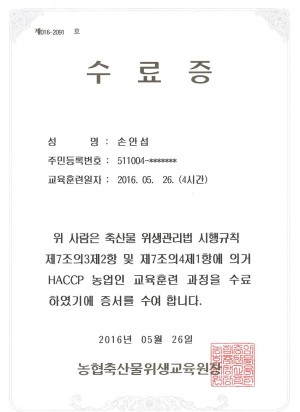
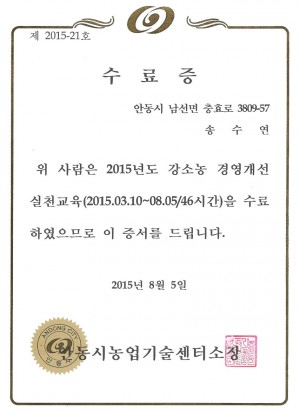
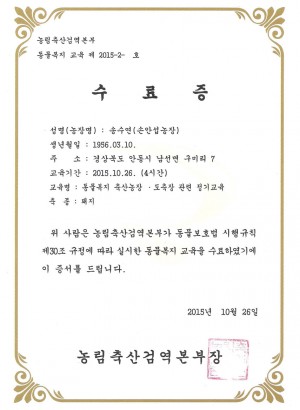
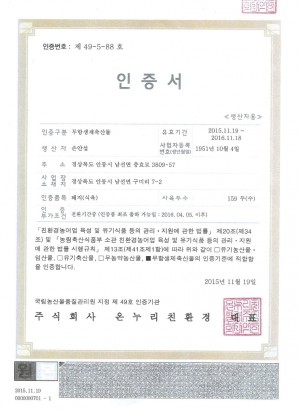
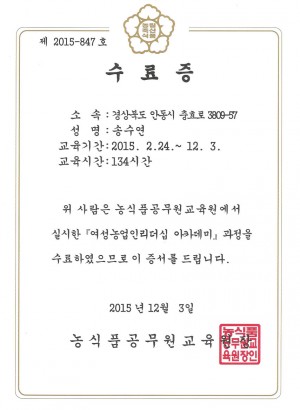
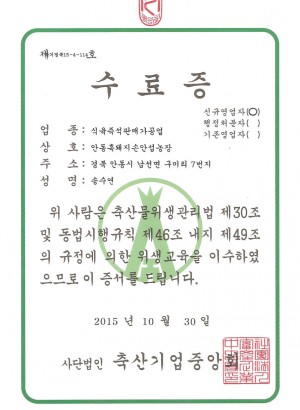

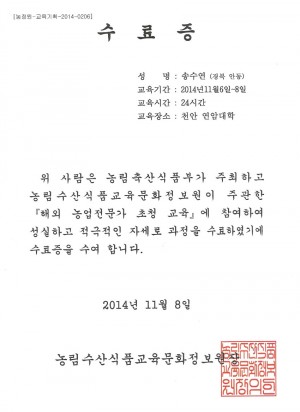

댓글목록
등록된 댓글이 없습니다.